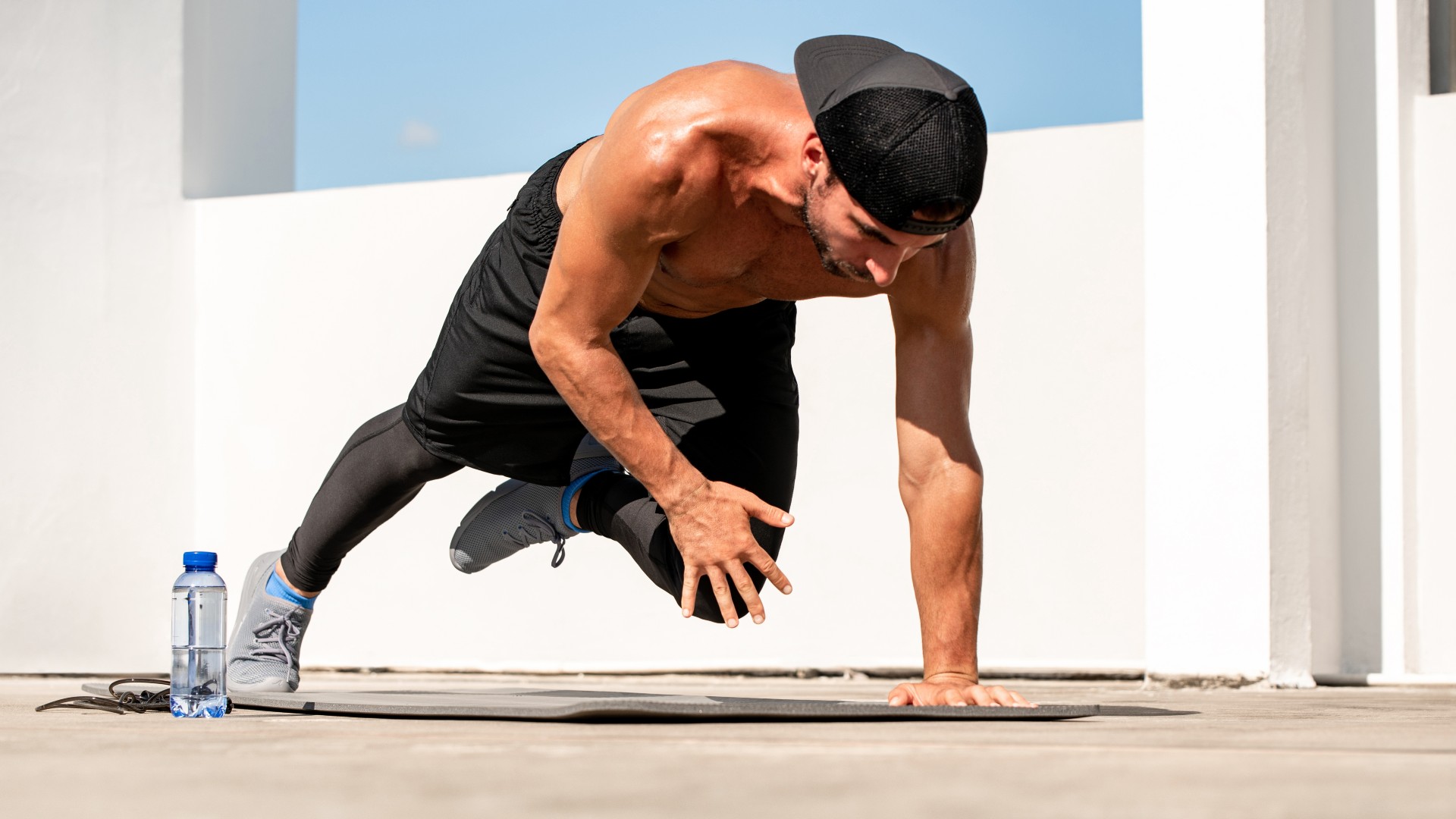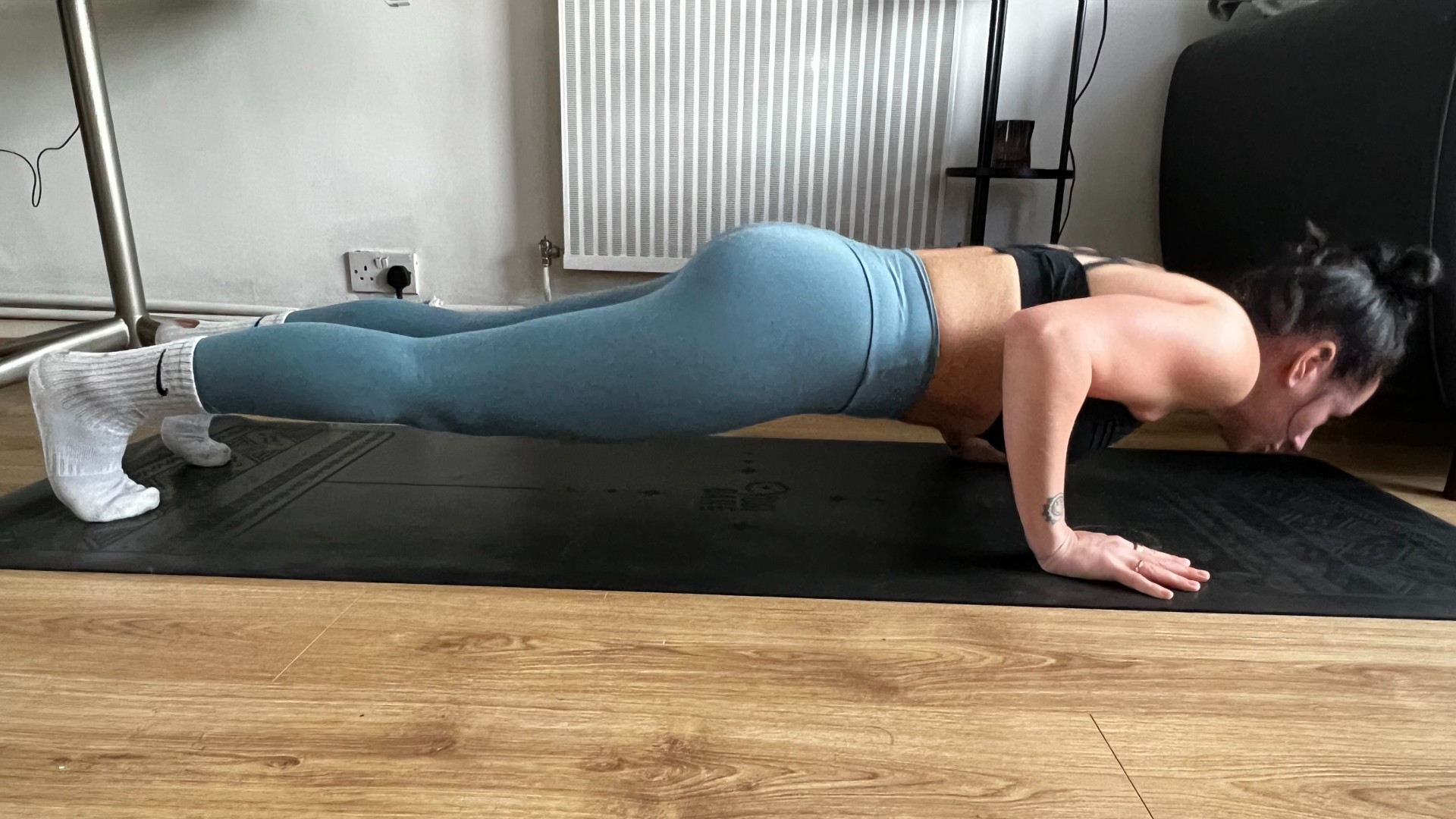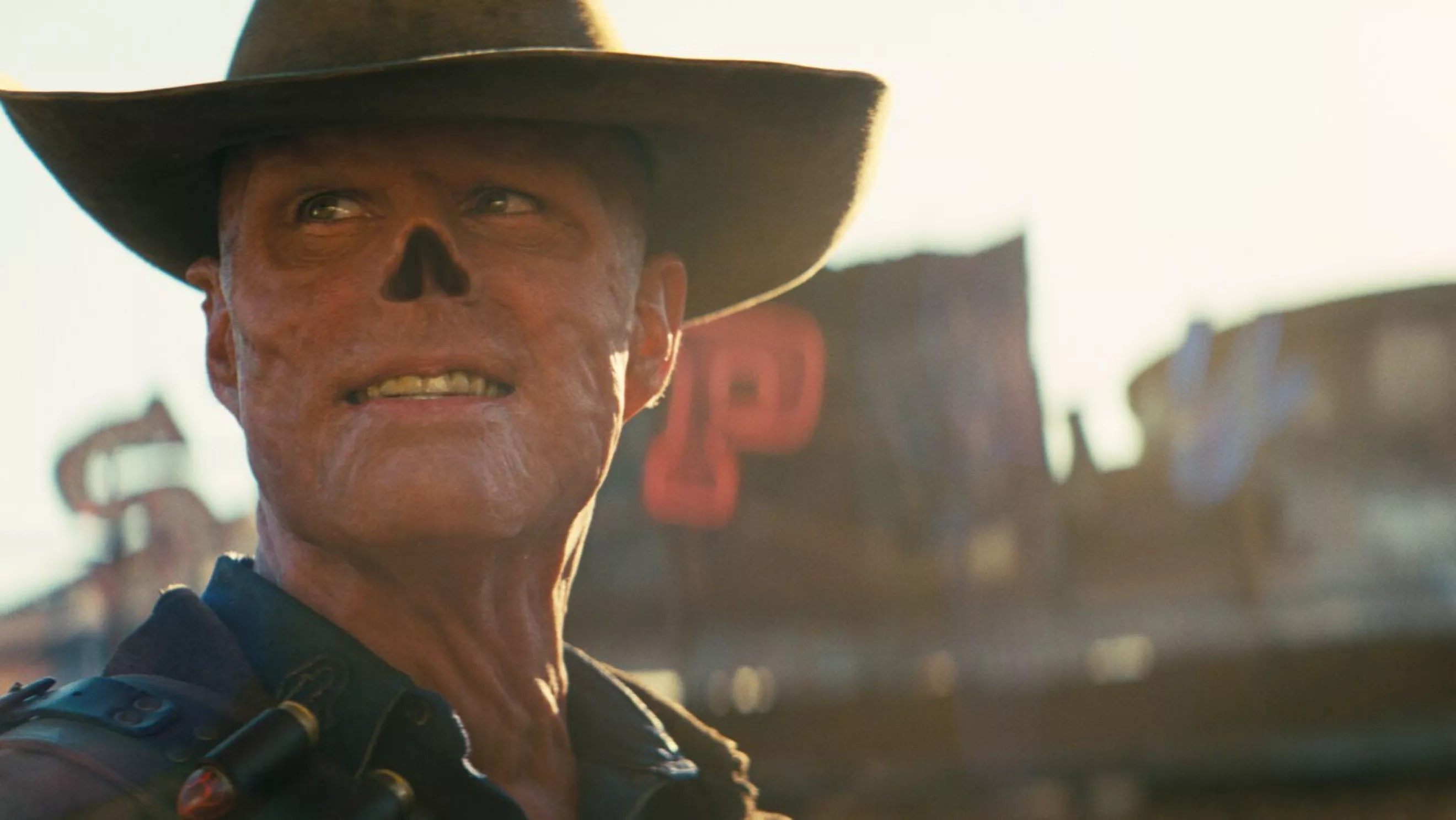
Show me the alligator walk, also known as the crocodile walk exercise, and I’ll show you a full-body workout capable of torching even the strongest core, chest, triceps, and — well — just about every muscle group.
These animal-themed exercises have a habit of humbling us whenever we tackle them during our week-long fitness challenges at Tom’s Guide. And make no mistake — this is a muscle-torching masterclass, whatever your fitness ability.
The exercise mimics the movement pattern of an alligator, combining a high-plank with crawling and push-ups as you make your way along the floor. So put the best kettlebells and dumbbells down, you don't need them here.
I gave the alligator walk my time and energy for seven minutes a day for one week to see what (if anything) would happen to my body. Here are my results.
How to do the alligator walk exercise
As with any exercise, there are various interpretations of the alligator walk floating around on YouTube and socials, but here’s how to walk the walk with good form.
How:
- Start in a high plank position, arms straight with shoulders stacked over wrists
- Engage your core and squeeze your glutes
- Walk your left hand as far forward as possible and simultaneously bend your right leg and draw it toward your right elbow, pressing the ball of the foot down onto the ground
- As you do this, lower into a push-up with your chest close to the ground and hips aligned with shoulders
- As you push back up, switch arms and legs by stepping your right hand and left foot forward. Continue the reps, lowering your chest each time you walk.
I did the 7-minute Alligator Walk exercise every day for a week — here are my results
Day 1
The first battle — lack of space.
Sign up to get the BEST of Tom's Guide direct to your inbox.
Get instant access to breaking news, the hottest reviews, great deals and helpful tips.
During summer, I would’ve shamelessly taken the crocodile walk outdoors for a stroll in the communal gardens. But with the autumnal frost finally settling in, I’ve been hesitant to put hands to concrete.
Instead, I decided to walk from room to room, using a 60-second on, 30-second off format, totaling seven minutes, elbowing several plants and knocking over my tumbler of water. We’re off to a good start.
Day 2
I started day two with more optimism. Hold on, were these DOMS I could feel?
My triceps, chest and core were definitely sore, and I felt a little stiff as I dressed. The crocodile walk incorporates push-ups and crawling, which means you’ll tax your triceps, pectorals and anterior deltoids (the fronts of your shoulders), hitting your core hard in the process.
You’ll also build strength in your hip flexors, glutes and quads but the exercise is particularly challenging for the upper body. I started having flashbacks to the similarly named alligator drag ab exercise challenge, which torched my arms and chest in equal measure when I tested it out.

Days 3 & 4
Over the next few days, I got used to the technique and decided to play around with speed instead. If you don’t have full-range push-ups available, use the time to practice and coordinate your arms and legs rather than going for distance or reps.
To make the strength exercise more cardio-focused, increase your speed — easier said than done in a tiny city apartment — or slow it down with a technique called time under tension. I love using this technique for push-ups and squats because you can squeeze the juice out of just about any exercise. Slowing down the eccentric and concentric phases helps develop control and hold the muscles under tension for longer, building strength and muscle in the process.
Both options skyrocketed the intensity of the exercise on my muscles, reminding me that calisthenics (bodyweight training) can build strength and improve balance, coordination and the mind-muscle connection without lifting heavy weights. A time and a place, and all that.
Days 5 & 6
As the week drew to a close, I concluded that, unlike push-ups, sit-ups and burpees, the croc crawl requires space, and you’re simply compromising without it.
Despite negotiating the space backward on several occasions (this method is insanely tough and requires even more coordination as your bum will try to shoot into the air), I craved a track or gym floor for progressing forward and building momentum — a lesson for next time.
Despite the setbacks, I still managed to raise my heart rate, scorch my upper body muscles and switch my hip flexors on. And I had fun doing it, which is more than can be said for some of our TG fitness challenges.
Day 7
After seven straight days of targeted upper body exercise, I noticed some muscular fatigue and started to lose coordination as I heaved my body weight along the floor. Your weight should be distributed evenly as you move, which helps you avoid dropping your hips. I recommend dialing in on your form using a mirror or filming yourself if you’re new to the move.
I did the 7-minute Alligator walk exercise every day for a week — verdict
Of course, after a week, I didn’t look different, but I loved dedicating time to push-ups, and my technique and coordination improved.
Exercises like these help develop mobility, improve functional movement and strengthen your joints, bones and muscles when performed regularly. The croc crawl works well as a standalone strength drill, or you could add them to workouts like circuits to work on your endurance.
If you’re determined to stroll about like an animal and this exercise isn’t yet accessible, use bridging exercises. The crab walk (as featured in the article I did the 7-minute crab walk exercise every day for a week, and here’s what happened) will help you get used to moving on your hands and knees and engaging your core; bear crawls use a similar movement pattern without push-ups.
Want to make the exercise even harder? Try holding a pair of dumbbells to create a deficit, or wrap a resistance band across your shoulders. And although the croc crawl is a core-torcher, if your goal is to develop a sculpted midsection, we recommend adding a mix of isolation and compound exercises to hit your abs hard.
More from Tom's Guide

Sam Hopes is a level 3 qualified trainer, level 2 reiki practitioner and senior fitness writer at Tom's Guide. She is also currently undertaking her Yoga For Athletes training course. Sam has written for various fitness brands and websites over the years and has experience across brands at Future such as Live Science, Fit&Well, Coach, and T3.
Having worked with fitness studios like F45 and Virgin Active, Sam now primarily teaches outdoor bootcamps, bodyweight, calisthenics and kettlebells. She also coaches mobility and stretching-focused classes several times a week and believes that true strength comes from a holistic approach to training your body.
Sam has completed two mixed doubles Hyrox competitions in London and the Netherlands and finished her first doubles attempt in 1:11.
